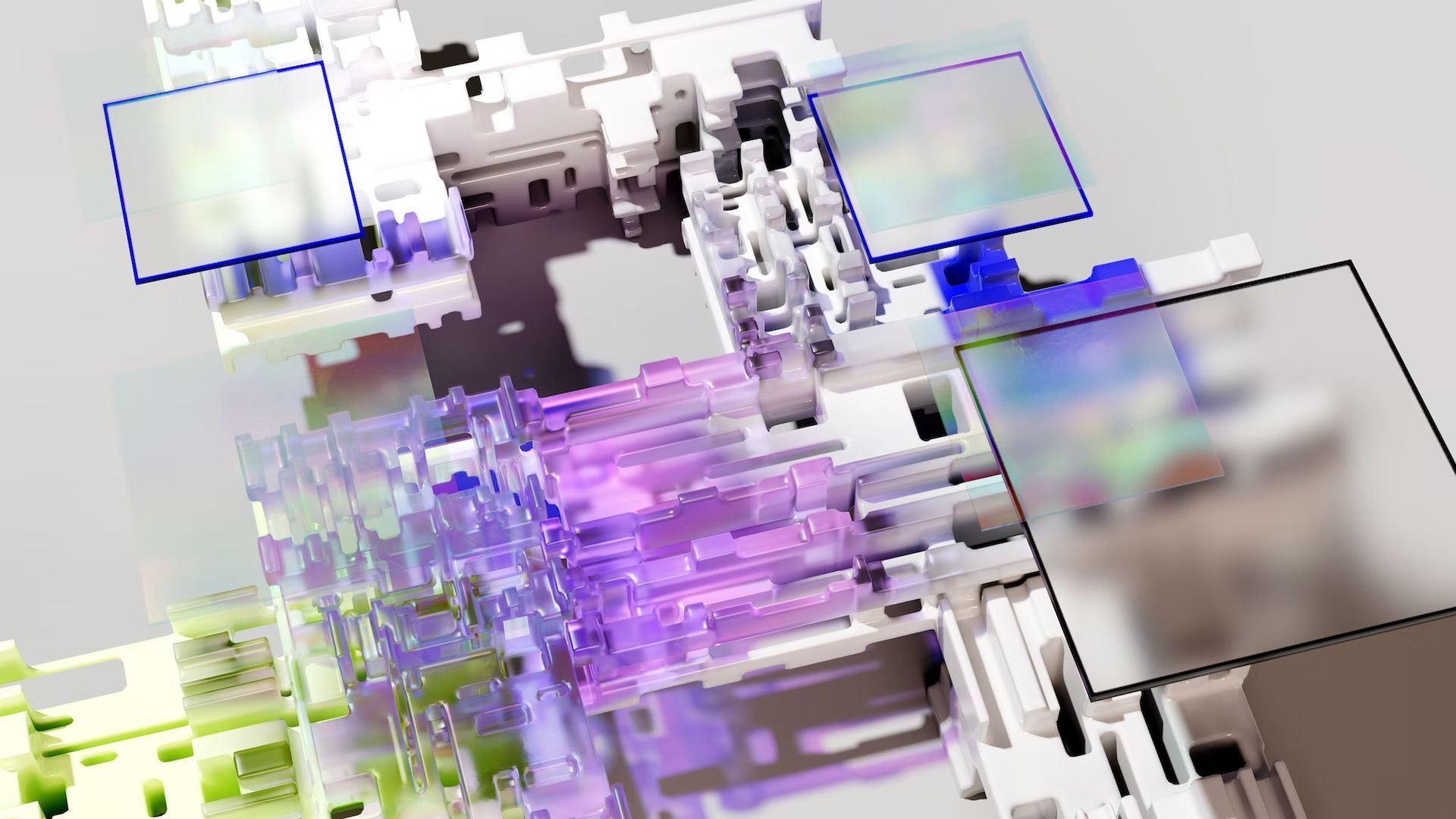There is a disagreement among professionals over artificial general intelligence definition. Artificial general intelligence (AGI) is the capacity for machines to perceive, learn, and carry out intellectual tasks in a manner similar to that of humans.
AGI allows machines to mimic human behavior and thought processes in order to tackle any kind of complex problem. The performance of these machines is identical to that of humans due to their design, which includes comprehensive knowledge and cognitive computing skills.

Artificial general intelligence definition
Artificial general intelligence (AGI) is the software representation of generalized human cognitive capabilities so that the AGI system can come up with a solution when presented with a challenging issue. AGI systems are designed to carry out any task that humans are capable of.
What is artificial general intelligence?
Because specialists in various domains interpret human intelligence differently, there are many possible definitions of AGI. Human intelligence is frequently described by computer scientists in terms of the capacity to do tasks. On the other hand, psychologists frequently describe general intelligence in terms of survival or adaptability.

Artificial general intelligence definition: What is another term for general AI?
The terms “strong AI,” “full AI,” and “general intelligent action” are also used to refer to AGI. However, some academic sources reserve the phrase “strong AI” for computer systems that have sensibility or consciousness.
Artificial general intelligence examples
True AGI systems are not yet commercially available. However, there are instances of limited artificial intelligence systems that come close to or even match human capabilities in some circumstances. These systems and the potential applications of AGI in the future are the subjects of current research in artificial intelligence.

Here are some examples of those systems:
- Autonomous cars: These are capable of identifying other cars, pedestrians, and other things on the road, and they follow all driving laws and regulations.
- ROSS Intelligence: The “AI attorney” is another name for ROSS, a system that provides legal expertise. It can extract data from approximately 1 billion text documents, analyze the data, and deliver accurate answers to challenging queries in under three seconds.
- IBM Watson: Calculations that an average computer couldn’t do can be handled by Watson and other supercomputers. They combine their enormous computer capacity with AI to complete previously unachievable engineering and science tasks, such as simulating the Big Bang theory of the universe’s origin or the human brain.
- AlphaGo: Another instance of a restricted intelligence that excels at a particular kind of problem-solving is this one. A computer software called AlphaGo is capable of playing the Go board game. Go is a challenging game that is challenging for humans to learn. In a five-game battle in 2016, AlphaGo defeated Lee Sedol, the reigning world champion.
- Expert systems: These AI-powered devices imitate human judgment. They can forecast molecular structure and make medication recommendations based on patient data.
- Generative Pre-trained Transformer 3: GPT-3 is a tool that can produce human language on demand. Sometimes it is impossible for someone to distinguish the outcome from human production, but the output is frequently deficient. General human intellect can continuously be mimicked by technology.
- Music AIs: An AI program called Dadabots can create a stream of music that is an approximation of a body of preexisting music when given that body of music.

Some of the examples from above might function more effectively if AGI were used in them. For instance, a human must be present when self-driving automobiles are used to handle decision-making in confusing circumstances. The same holds true for language models, judicial systems, and music-making algorithms. These fields cover both automatable jobs and those that demand human intelligence and a higher level of abstraction.
Artificial microswimmers can navigate similarly to natural microorganisms, thanks to AI
What are the 3 types of artificial intelligence?
Now you have learned artificial general intelligence definition. It’s time to make it clearer with some examples. The ability of AI technologies to replicate human qualities, the technology they employ to do so, the applications they have in the actual world, and the theory of mind—which we’ll cover in more detail below—are used to classify them.
All hypothetical and practical artificial intelligence systems can be classified into one of three categories using these traits as a guide:
- Artificial narrow intelligence (ANI): It offers a narrow range of abilities.
- Artificial general intelligence (AGI): It aims to offer human-like abilities.
- Artificial superintelligence (ASI): It aims to offer more capabilities than a human.

What is artificial narrow intelligence (ANI)?
In the 1950s and 1960s, the pioneers of the area of artificial intelligence were primarily focused on developing hardware or software that could simulate human-like general intelligence. Since then, the field has shifted its attention primarily to the pursuit of distinct abilities or particular usable activities. Although this strategy has produced a number of intriguing technology and theoretical findings, it has so far been largely ineffective in achieving the field’s initial primary objectives. In order to distinguish the pursuit of general intelligence from more narrowly focused associated activities, several academics now use the name and idea of “AGI.”

Sometimes a distinction is made between AGI and “narrow AI.” For instance, Kurzweil compared “strong AI” with “narrow AI,” using the latter to essentially refer to what is now known as AGI. The former refers to the development of systems that carry out specified “intelligent” actions in specific settings.
For a restricted AI system, some degree of human retraining or reconfiguration is typically required to enable the system to preserve its level of intelligence if the context or the behavior specification is even slightly altered. In terms of quality, this appears to be very different from naturally intelligent systems like humans, who have the capacity to adapt to changes in their goals or environment by engaging in “transfer learning,” which is the process of generalizing knowledge from one purpose or context to another.

One of the research topics in the realm of AGI is the accurate description or definition of AGI. It is widely acknowledged that humans do not possess infinite generality of intellect given realistic space and time resource limits and that no real-world system will possess infinite generality for similar reasons. Real-world AGI systems will combine generality and specificity in their own unique ways, just as human intelligence does. Human intelligence combines a certain degree of generality of scope with a variety of highly technical aspects aimed at providing efficient processing of pragmatically important problem types.
NovelAI now offers NovelAIDiffusion, a text-to-image AI tool
What is artificial superintelligence (ASI)?
A software-based system called artificial superintelligence (ASI) has cognitive abilities that are greater than those of humans in a nearly infinite number of categories and fields of study.
Artificial intelligence (AI) is the simulation of human intellectual capacities such as learning (the acquisition of knowledge and rules for applying it), reasoning (using the knowledge to arrive at approximations or firm conclusions), and self-correction using computer software.

In systems like virtual assistants, expert systems, and self-driving cars, AI is becoming more prevalent in our daily lives. But the technology is still in its early stages of development. All of the AI systems in use today are weak AI systems, which are applications of artificial intelligence technology to create high-functioning computers that imitate and possibly even outperform human intelligence for a specific purpose.
Super AI definition
Despite this unpredictability, there are some fierce proponents of AGI in the foreseeable future. The most well-known of these is perhaps Ray Kurzweil, Google’s director of engineering, who believes an AGI that can pass the Turing Test will exist by 2029 and that by 2040, inexpensive computers will be able to process as many computations per second as the whole human race put together.

According to Kurzweil, once an AGI is created, it will swiftly evolve to the point where its intellect is beyond human comprehension. This improvement upon itself will happen at an exponential rate. The singularity, as he calls it, will happen in 2045, at which time there will be an AI “one billion times more powerful than all human intelligence today,” according to him.
Some of the most well-known scientists and technologists in the world have expressed concern about the grave dangers posed by AGI in response to the prospect of a near-future superintelligence. Elon Musk, the founder of SpaceX and Tesla, refers to AGI as the “biggest existential threat” to humanity, while Stephen Hawking, a renowned physicist, and professor at Cambridge University, warned the BBC that “the development of full artificial intelligence could spell the end of the human race.”

The AI community was urged to conduct “research on how to make AI systems robust and beneficial” in an open letter that they both signed.
The philosopher and director of Oxford University’s Future of Humanity Institute, Nick Bostrom, has issued a warning about what might occur if superintelligence is attained.
He believes that superintelligent agents may constitute a threat to humans, who may be “in its way,” and compares superintelligence to a bomb that is just waiting to go off due to irresponsible research.
Bostrom warned that if the robot gains enough strength, it “might seize control to gain rewards.”
Is artificial general intelligence possible?
The issue with talking about AGI and superintelligence is that the majority of people working in the field of AI emphasize that AGI is currently science fiction and may stay that way for a very long time.
Debates concerning the emergence of artificial general intelligence, according to Chris Bishop, laboratory director at Microsoft Research Cambridge, are “utter nonsense” and “at best, such discussions are decades away.”

Even worse, according to other AI researchers, such talks are deflecting attention away from the concerns that today’s limited AI poses in the near future.
A well-known name in the deep learning community, Andrew Ng formerly worked on the “Google Brain” project and was the head scientist for the huge Chinese search engine Baidu. He urged individuals discussing AI’s ethical implications to “cut out the AGI nonsense” and instead concentrate on how current technology is causing or would cause issues like “job loss/stagnant wages, undermining democracy, discrimination/bias, wealth disparity” to become worse.

Even emphasizing the advantages of AGI could harm public impressions of AI by fostering dissatisfaction with the relatively restricted capabilities of current machine-learning systems and their specific, one-note skill set, such as text translation or facial recognition.
What is the difference between AI and general AI?
Theoretically, AGI should be able to carry out every work that a person can and display a variety of intelligence in various domains. In most areas of intelligence, its performance ought to be on par with or superior to that of humans when it comes to problem-solving.

Narrow AI, on the other hand, excels in solving particular problems or tasks. For self-improvement and problem-solving, many current AI systems combine machine learning, deep learning, reinforcement learning, and natural language processing. These technologies, however, fall well short of the combined power of the human brain.
While AI is employed in numerous areas, AGI is not yet a reality. These are some instances of AI:
- Chatbots
- Face recognition software
- Voice assistants such as Siri, Alexa, and Google Assistant
- Recommendation engines that Spotify, Netflix, Google, etc. utilize.
AGI technology: Approaches
The intelligence of machines that enables them to comprehend, learn, and carry out intellectual tasks, much like humans, is known as artificial general intelligence (AGI).
AGI enables machines to mimic human thought and behavior in order to tackle any challenging task. The performance of these robots is identical to human performance because of their design for extensive knowledge and cognitive computing.

The core idea behind mind-level AI is to teach machines how to mimic human behavior and comprehend the essential components of consciousness. AGI can plan, gain cognitive abilities, make judgments, handle uncertain situations, use prior knowledge in decision-making, or increase accuracy with such a solid AI base. AGI can make it possible for machines to carry out creative, imaginative, and innovative jobs. Achieving strong AI has significant challenges. Multiple approaches have been tried and tested to achieve human-like intelligence. Listed below are some of the core approaches to AGI.
The symbolic approach
The term “symbolic approach” refers to the use of symbols and logic networks (i.e., if-then statements) to study and build a broad body of information. By manipulating these symbols that reflect the fundamental elements of the physical world, this knowledge base is expanded even further. The method imitates the more sophisticated levels of human thought.
The symbolic approach is capable of higher-level logic and thought, but it falls short when it comes to teaching lower-level skills like perception. The CYC project, founded by Cycorp’s Douglas Lenat in the 1980s to promote AI research, is a good illustration of the symbolic approach. CYC has a substantial body of knowledge, a sound logic framework, and a potent representational language.

The connectionist approach
The connectionist approach, a sub-symbolic technique, builds general intelligence using designs that resemble the human brain (such as neural nets). The method anticipates that lower-level sub-symbolic systems, such as neural nets, will eventually develop into higher-level intelligence, although this has not yet occurred. Convolutional neural networks and deep learning systems, like DeepMind’s AlphaGo, are excellent instances of the connectionist methodology.

The hybrid approach
The symbolic and connectionist systems are combined in the hybrid approach. The hybrid strategy is frequently used by the designs that are at the forefront of the AGI race, such as the CogPrime architecture. It uses a single knowledge representation known as AtomSpace to represent both symbolic and sub-symbolic knowledge. With the use of neural architecture, CogPrime, Hanson Robotics, and OpenCog developed the well-known social humanoid robot, Sophia.

Whole-organism architecture
According to experts, a general artificial intelligence system should have a physical body and gain knowledge via interacting with people physically. While such systems do not yet exist, Sophia, a humanoid robot that mimics human motions and facial expressions and engages in dialogues about predetermined themes, comes the closest.

Reaching to artificial general intelligence: Challenges
Although AGI has not yet been achieved, it opens up a wide range of opportunities that have the potential to change the AI industry completely. The development of artificial general intelligence is now hampered by significant obstacles and difficulties.
These are the key challenges of reaching the ultimate AGI stage.
Learning human-like skills
AGI must learn several human-like skills in order to reach full human-level intelligence, including:
- Sensory perception: Though computer vision has seen considerable success with deep learning systems, human-like sensory perception is still lacking in AI systems. Deep learning systems that have been trained, for instance, still have poor color vision. This is demonstrated by the ease with which small bits of black tape or stickers on a red stop sign may deceive self-driving automobiles. Sound perception is seen in a similar situation. AI algorithms today are unable to recognize and mimic distinct human hearing.
- Motor skills: Due to our fine motor abilities, humans can effortlessly recover anything from their pockets. Recently, reinforcement learning was used to teach a robotic hand how to solve a Rubik’s cube. The experiment, while noteworthy, highlights the difficulties of programming robot fingers on a single hand to manipulate insignificant objects like keys.
- Natural language understanding: Through books, articles, blog entries, and videos, people share knowledge. Because humans tend to assume that their readers are familiar with certain concepts, a lot of information is left out of written communication. The current AI must first consume enormous volumes of data from all sources of knowledge, which is a crucial duty. It will be challenging for these systems to comprehend circumstances and function in the actual world if AI lacks the foundation of common sense.
- Problem-solving: Consider a scenario in which a home robot must detect that an LED light bulb is burnt out and either inform someone or replace it with a new one. The robot must possess common sense, as was mentioned before, or be able to simulate all the permutations and combinations that define possibilities, plausibility, and probabilities in order to do this task. Both common sense and simulation capabilities are lacking in modern AI.
- Human-level creativity: If AI systems can comprehend the enormous quantities of code that humans have written, find new techniques that can be made better, and then rewrite the recognized code, they will automatically become smarter. Although AI-based computers have created music and drawn drawings, further AI development is required to demonstrate human-level creativity for self-improvement.
- Social & emotional connect: Human interaction is necessary for AI-enabled robots to function in the real world. Given the difficulties with perception outlined above, AI systems that are able to feel an emotional connection and demonstrate empathy currently appear like a far-off dream.

The absence of a working protocol
A functional protocol that enables artificial intelligence or machine learning networking systems to interact together is lacking in current AI systems. When deploying a full AGI system, this creates a serious technological weakness. Thus, the systems are compelled to operate as independent models in secure contexts. AGI systems require a complex and highly social human environment, which is not compatible with such a style of functioning.
Communication gaps
AI systems currently confront a significant communication barrier. Lack of communication between various AI systems makes it difficult to share data in an efficient manner. Machine learning models are no longer able to learn from one another. AI may not be able to maximize the assigned tasks due to the impact on inter-learning. This eventually decreases the general AI system’s universality.

The absence of business alignment
Business executives must adopt a strategic approach by establishing goals, choosing KPIs, and monitoring ROI in order to integrate AI effectively. Otherwise, it could be challenging to evaluate and compare the outcomes of AI investments in order to determine their success (or failure).
It takes a lot of work to integrate AI into current systems. It is necessary to take into account a number of factors, including the need for data infrastructure, data storage, data labeling, feeding the data into the system, and others. Concerned stakeholders appear to now be unaware of all these AI operational factors. This impedes the overall growth and accomplishment of business objectives.

The absence of AGI direction
Businesses are frequently unable to grasp the basics of the AGI system, which forces them to recruit a specialized team of AI experts, which can be an expensive endeavor. In addition, businesses lack a clear plan and direction based on AI for how to run their operations. Because of this, implementing AI systems is expensive and difficult. These issues have a substantial impact and serve as obstacles to the development of a complete AGI system.

Artificial general intelligence: The latest advancements
The advancement of human-like intelligence has been advancing more quickly than ever before as AI developments take center stage amid the COVID-19 epidemic. A complete AGI system does not yet exist, but recent developments in AI may push the limits of AGI and hasten its development.
The top 10 AI trends that could advance AGI are listed below.
NLP improvement
Artificial intelligence (AI) technology called natural language processing (NLP) greatly decreases the need to interact with screens by understanding human language. AI-enabled gadgets can translate human languages into computer codes that are then utilized to operate programs and applications.

The most recent iteration of NLP, GPT-3, was just released by OpenAI. GPT-3 processes languages using more than 175 billion parameters. Additionally, OpenAI is also focusing on GPT-4, which has the potential to handle 100 trillion parameters for thorough language processing. A machine that can interact and engage with humans in a way that is as good as real is definitely possible thanks to such AI developments.
Metaverse
As businesses and individuals experiment with immersive technologies to work and engage in this virtual world, Metaverse has been thriving. Users spent almost $106 million to purchase virtual goods in the Metaverse in November 2021, with a focus on digital land, opulent yachts, and other assets, according to data from DappRadar.
In light of this development, AI and ML are predicted to advance the Metaverse by creating a virtual environment with AI chatbots that make users feel at home.

Hyper automation
Robotic process automation (RPA) and intelligent business process management are only two examples of the procedures that various sectors use AI and ML technology to automate. As it extends the opportunities for automation for enterprises, hyper-automation adds a further layer to sophisticated automation capabilities. Gartner predicted in April 2021 that the hyper-automation market would reach $600 billion by 2022.
Increased diversity on governance jobs
The absence of model governance can lead to algorithmic bias. Here, AI specialists should pay more attention and make sure that AI/ML models don’t form biases or make poor judgments. Twitter recently acknowledged, in October 2021, that its algorithm has established a bias favoring right-wing politicians and news sources.

In a related event, Amazon identified prejudice in its employment algorithm against women in 2015. This was due to the algorithm’s scrutiny of resumes over the previous ten years, the majority of which were written by men, which caused it to be prejudiced against women.
Examples like these will open the door for a surge in jobs like chief AI officer, chief AI compliance officer, and other similar posts. Such occurrences are anticipated to increase in the near future due to the fast use of AI and ML.
The rise in low-code or no-code AI
Today, there is a big need for qualified AI engineers. Companies are constantly looking for engineers that can create AI tools and algorithms to support their company processes. This problem can be solved by low-code and no-code AI solutions by providing user-friendly interfaces that facilitate the development of sophisticated systems.
Drag-and-drop possibilities are typically offered by low-code solutions, which streamlines the development of applications. Moreover, voice-based directions for completing difficult activities can be provided using NLP and language modeling technology.
Workforce augmentation
There has been concern about AI taking over human occupations for a while now. In reality, corporations appear to be utilizing AI/ML models to collect, evaluate, and generate insights from data that aid in corporate decision-making. In such a situation, businesses need both human workers and AI machines operating together.

Sales, marketing, and customer support are just a few of the areas that already use AI/ML technology to improve operations. This hasn’t, however, lessened the potential reliance on humans. In actuality, it has only improved these departments’ efficiency. From here on, this trend is only anticipated to increase.
AI chatbots
AI-enabled virtual assistants are referred to as conversational chatbots. They engage in normal discussions and perform some rule-based tasks, such as answering questions or changing passwords. These chatbots have taken the position of customer service representatives, significantly lowering operational expenses for enterprises. Conversational AI chatbots may transform the field of AGI in the future due to the changing NLP environment.
NVIDIA announced the new NeMo and BioNemo large language models at GTC 2022
Ethic AI
In recent years, the number of AI application cases has increased considerably across all industry sectors. Despite the advantages of AI technology, it is impossible to disregard their potential downsides. As a result, in the years to come, there will be a greater emphasis on AI ethics because if these technologies are not employed for good, the world may come to an end.

AI-based hiring process
Companies are now anticipated to utilize more AI/ML-based solutions as the virtual world replaces the traditional physical reality, as the epidemic has already hurt the hiring process. Moreover, companies are anticipated to use AI-powered solutions to handle the employment process as language modeling techniques advance, and conversational AI chatbot competence rises.
Quantum AI
Despite the fact that the science of AI has made significant advancements recently, quantum computing has the potential to speed up machine learning algorithms and produce results more quickly. Quantum AI has the potential to remove barriers to AGI since it can quickly analyze vast amounts of material from books, papers, blogs, and other similar sources to build a solid knowledge base.

Conclusion
The current decade will be incredibly important for the creation of AGI systems. By 2030, there is a 25% probability, according to experts, that human-level AI will have been created. Additionally, the current data explosion and technological breakthroughs, along with the growing preference for robotic processes and machine algorithms, will provide a favorable environment for the spread of human-level AI platforms. In this highly technical society, AGI systems will eventually become commonplace. We hope you were able to learn artificial general intelligence definition.





